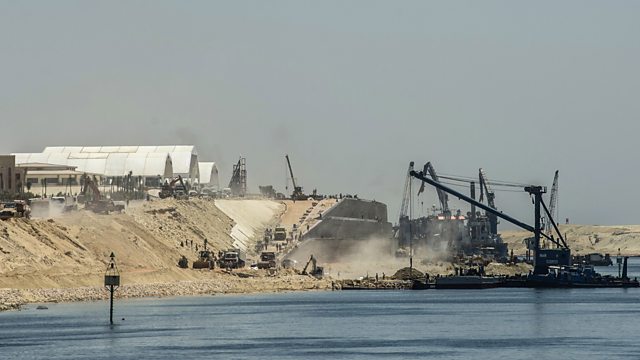
Invasive Species from the Suez Canal
Sounding the alarm for invasive species in the extended Suez Canal and enlisting social media reviews to track food poisoning outbreaks.
With the recent expansion of the Suez Canal, ecologists have voiced worries about the possible increase in the number of invasive species that travel between the Red Sea and the Mediterranean, which already impact tourism, fishing and even power production in the region. But what can be done about them?
Kenya SokoText
SokoText is a smart solution with a big idea: to make food affordable for everyone. We use the power of text messaging to aggregate demand for food and unlock wholesale prices for small entrepreneurs in urban slums. Gareth Mitchell talks to the co-founder, Suraj Gudka.
Can social media improve food hygiene?
Dr Elaine Nsoesie of the University of Washington, Seattle, talks about her work on real-time tracking and tracing of restaurant food poisoning outbreaks by using people’s tweets and web reviews.
Keeping PAWS on pests
New Zealand is heavily reliant on agricultural exports so the introduction of an invasive pest or disease could be devastating for the local economy. Pests have already caused havoc with native flora and fauna and many species are now under threat, including the flightless bird, the kiwi. But a new system called PAWS, which stands for print acquisition and wildlife surveillance, can monitor pests remotely, and even be used to alert border protection agencies to threats in real time. Simon Morton reports from the outskirts of Christchurch.
The Great Telescopes and Evolution
Today, astronomers believe the universe is a violent, constantly changing place. But it was not always the case. At the beginning of the 19th century, many believed that the celestial sky was a constant, divinely perfected, completed creation. But as telescopes got larger, the mystery of the number, origin and role of the "nebulae" - those colourful, cloud-like smudges on the sky – grew and grew. Were they really vast clouds of gas and dust? Or were they merely closely packed, very distant clusters of stars, as some of them appeared when magnified through the great reflecting telescopes?
Raw music therapy
Claudia Hammond visits Raw Sounds – a community music project in South London aimed at exploiting the therapeutic power of making music for people with mental health problems.
The Science Hour was presented by Gareth Mitchell with comments from Melissa Hogenboom.
Producer: Colin Grant
(Photo Credit: A picture taken on July 29, 2015 shows a general view of the new Suez Canal in the Egyptian port city of Ismailia, east of Cairo. Credit: Khaled Desouki/AFP/Getty Images)
Last on
More episodes
Previous
Next
Broadcasts
- Sat 15 Aug 2015 21:06GMT����ý World Service
- Sun 16 Aug 2015 10:06GMT����ý World Service except West and Central Africa
- Mon 17 Aug 2015 05:06GMT����ý World Service South Asia
Podcast
-
![]()
Unexpected Elements
The news you know, the science you don't

